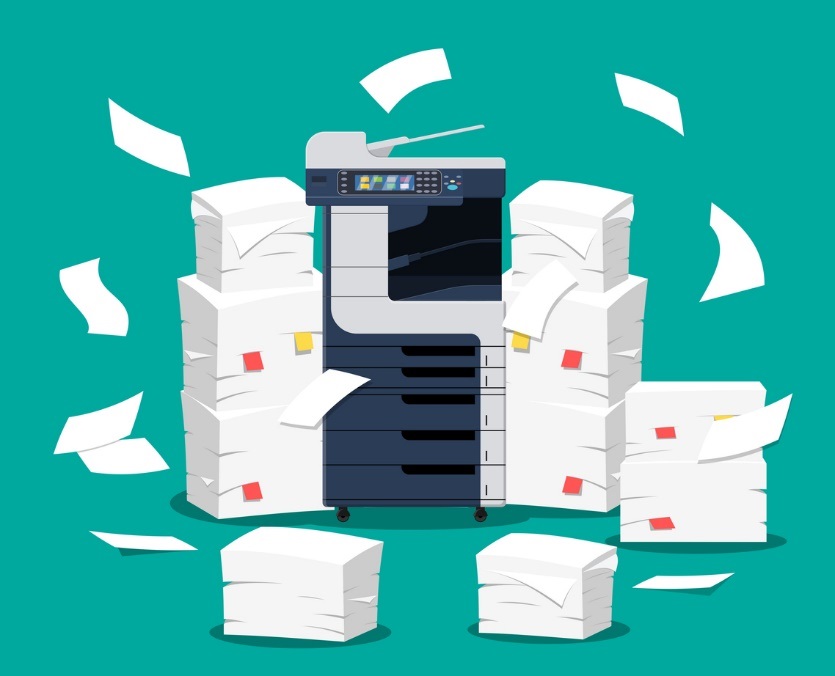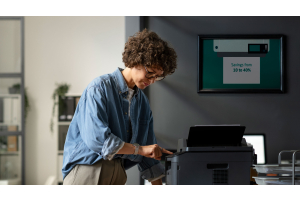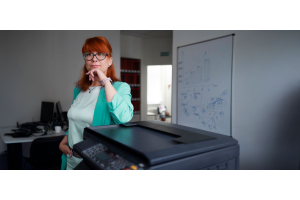What To Consider When Buying Photocopiers?

Multifunction photocopiers are an integral part of the workflow of most businesses. Professional advice is essential to avoid making a costly mistake. The ability to simply print, copy and scan is a given, however as you can see from the list below there are many other factors you need to consider, from machine capabilities to after sales support and service.
Things To Consider When Buying A New Copier
The following are some important things you should consider when buying or leasing, renting a photocopier for your business.
- Multifunction capabilities – multifunction devices always come standard with print, copy and scan functionality, however many entry level models are striped of extra capabilities to make them cheaper in cost and so they can be tailored specifically for each businesses needs. These include the following:
- Document feeder – some document feeders have slower scan speed because the page needs to be flipped or reversed in the machine to scan a double-sided page. Alternatively, an upgraded single pass feeder, scans both sides in one pass increasing the speed and reducing the likelihood of jams.
- Optical Character Recognition (OCR) – OCR capability converts scanned files into a searchable PDF file or an editable Office Open XML (docx, xlsx, pptx) file. This means the photocopier actually reads what’s on the page when scanned rather than taking an image snapshot.
- Cloud connection – with a lot of businesses moving to cloud systems, many newer devices have the ability to print or scan directly to cloud services for example: Google Drive, OneDrive, SharePoint, Box and Dropbox. Some brands can connect to all of these as standard whilst others need specialised software to communicate with them. Make sure your chosen machines work with your document management systems.
- Fax – no longer used by most businesses – fax units have been taken off larger photocopiers to reduce their cost. If fax is a requirement, a separate fax machine will need to be
- Apple/Mac compatibility – postscript kits may need to be added so that the machine can communicate with any Apple/Mac devices. This is especially necessary for things like AirPrint to be able to print from iPhones or iPads.
- Wireless – Are you able to plug the device into an ethernet port? If not and you are planning on connecting it to a wireless network, make sure the machine is wireless capable.
- Paper Handling – most multifunction photocopiers have very versatile paper handling as standard as well as optional extras that will depend on your business needs.
- Paper size – machines can often accommodate from A5 to SRA3 as standard and custom extra-long banner paper up to 1,300mm as an option.
- Paper weights – some machines support of up to 300 g/m2 through all trays. whilst others may only be compatible with the bypass tray.
- Finisher options – Does your business require stapling, hole punching or booklet folding? There are a range of options which take all these into account at different price points and footprints:
- Internal finishers – can staple in the corners or down the edge. They can also hole punch. They sit inside the output tray of the copier and do not increase the footprint of the machine. They have a smaller capacity than an external finisher and cannot fold.
- External staple finishers – These will staple on the edge and in the corners. They can also hole punch. They have a larger capacity than an internal finisher, but, they sit on the side of the multifunction device and therefore increase the footprint.
- External booklet folder – otherwise known as a saddle stitch finisher, has the ability to fold booklets and staple down the spine of the booklet. These again have a larger capacity and footprint.
- Colour printing – Depending on the brand and model, colour print resolutions can differ. 600 x 600 dpi, 1,200 x 1,200 dpi, 2,400 x 2,400dpi, 9,600 (equivalent) x 600 dpi are all common resolutions. You would expect the higher resolutions would produce significantly better prints, however it is sometimes hard to tell the difference with the naked eye. Often the difference of colour output between brands is more significant to people than the resolution. For example, a Sharp and Canon copier printing the same image at the same resolution will look slightly different due to having different print engine technology. If colour quality is a deciding factor in the decision make sure to get samples of what you’re printing and on the paper you use.
- Print volume – it is helpful to know what your print usage is like on a monthly basis as the devices have recommended monthly duty cycles. It is also helpful to know how this volume is spread throughout the month. Are you doing multiple small print runs or are you doing larger print runs with lots of pages. This will help decide the speed of machine required. If most print jobs are small , you can save money with a copier that has a slower print engine (20 to 30ppm). If higher print runs are being done then you will likely need a faster print engine (40 to 100ppm).
- After sales support options
- Service and maintenance - There are 2 types of servicing styles in the industry
- Corrective only maintenance – The machine is only maintained when a user calls their supplier with an issue. When a technician services the equipment, they only fix what is causing the issue. This way of maintaining the copier is much cheaper and can result in lower cost per page rates. This is the most common model used by copier companies, despite their denials this is the case.
- Preventative & Corrective maintenance – preventative maintenance is similar to how you would service your car. As the copier reaches certain usage levels, the supplier is alerted to replace drums, transfer and fuser units and sundry other parts. These parts are replaced even if they are still in reasonable working order to ensure consistent high quality print quality. This results in less corrective service calls and less downtime. It allows the supplier to prioritise the resulting fewer corrective calls , leading to quicker service completion times. This is the approach Axia takes, and we guarantee our service completion time is less than 4 hours.
- Account management – if your photocopier is under a manage print service you should have an account manager that will track your usage and ongoing requirements. They will have the ability to make changes if you need to upgrade or add additional printers and copiers. This may be as a result of business changes or significant increase in usage.
- Service and maintenance - There are 2 types of servicing styles in the industry
- Upgrade options – manufacturers typically release small changes and updates to model lines every 1-2yrs and release complete model upgrades every 3-5yrs. These model upgrades come with technology advancements which may be of benefit to your business, or they may have a lower running cost that would be more cost effective over an older device. Make sure that your supplier is able to upgrade your equipment, if necessary, throughout your agreement with them.
- Budget – All of the above factors will affect the price of the device and service which is why it is good to take them all in to consideration so that you are not adding unnecessary features or options. A good rule of thumb is the faster the print engine the more expensive the device will likely be. If budget is limited there are also options for fully refurbished second-hand devices which can be a great option for smaller businesses.
Managed Print Services in Sydney
Managed print services, also known as print management, is a service offered by an external print provider, such as Axia Office, to manage your organisation’s document output.
Through our managed print services, we help you manage all aspects of your company’s printing, including all photocopiers and printers, remote tracking of consumables, routine services, document routing and management and network security.
We show you how to reduce pages printed, with emphasis on colour pages.
Our print plans are tailored to each business’s specific requirements, to ensure that they get the exact solution that fits their needs. The aim is always to provide increased productivity through more efficient machines and processes whilst reducing costs to the business.
Your business has a lot to gain by using managed print services. To help you understand why you should switch over, here is a quick list of benefits.
Ten benefits of managed print services:
- Improved costs
- Ongoing preventative servicing
- Fast (under 4 hour) breakdown servicing
- Supply refills are automatically tracked and delivered
- Payout of existing contracts
- It is easy to track printing costs
- You benefit from professional advice on what printer to use
- Your company gets to use the latest award-winning devices
- Ability to improve document routing and storage
- Printing becomes more reliable in your business
To get a more in-depth understanding, read our other blog post “What is Managed Print Services and How Does It Help Your Business?”
In conclusion, you can see that there are many aspects which should be considered when leasing copier, renting, or buying a photocopier. It is important to compare photocopier features, after sales service and how the financing of the managed print plan works.
Axia Office offers affordable solutions to businesses in the Sydney metropolitan area, providing high-quality printers from the top names in the industry, and quick, reliable service when you need it. Contact us to learn more about what we can do for you and your business.








